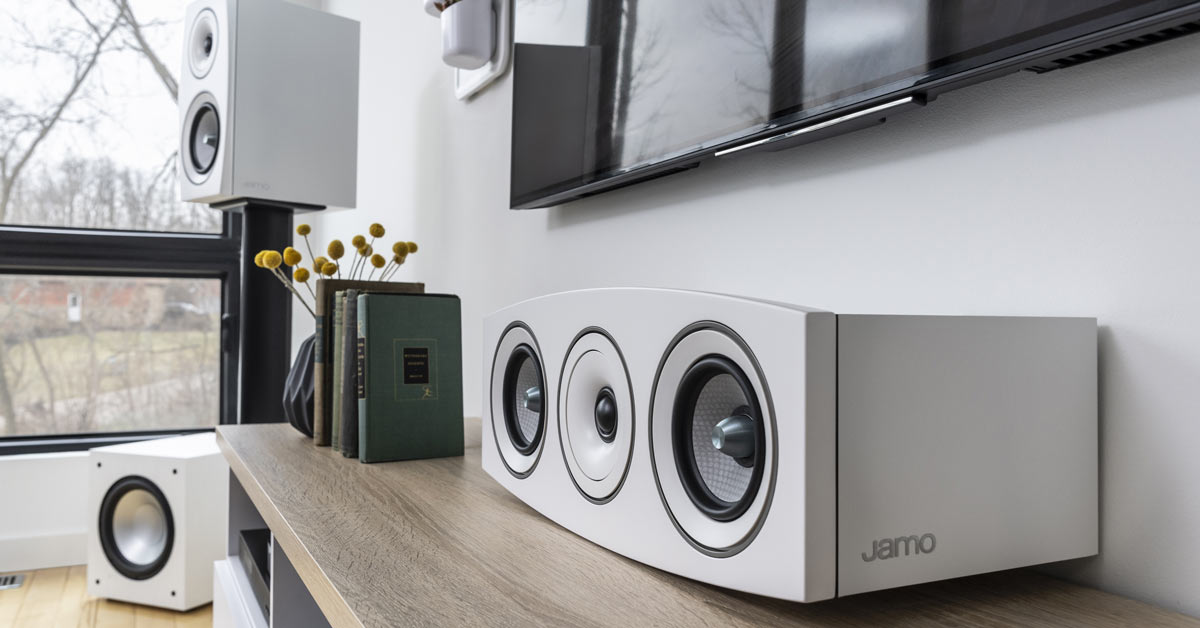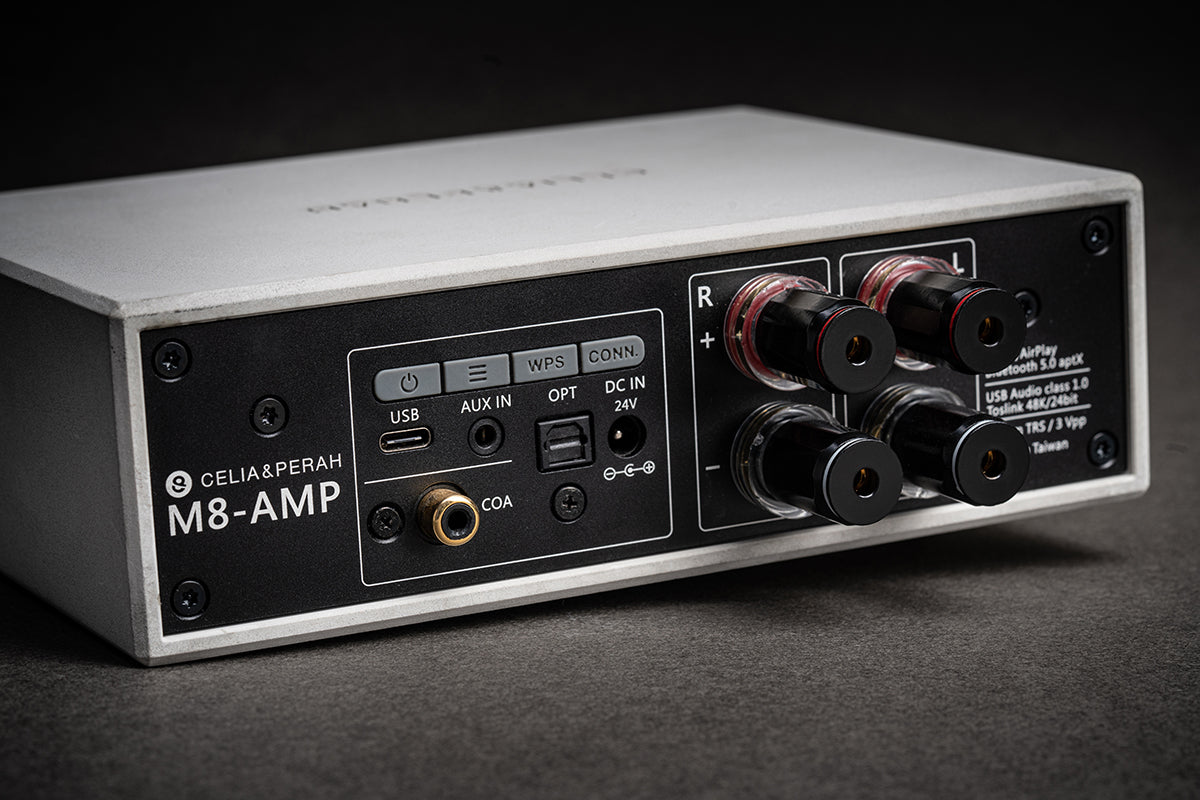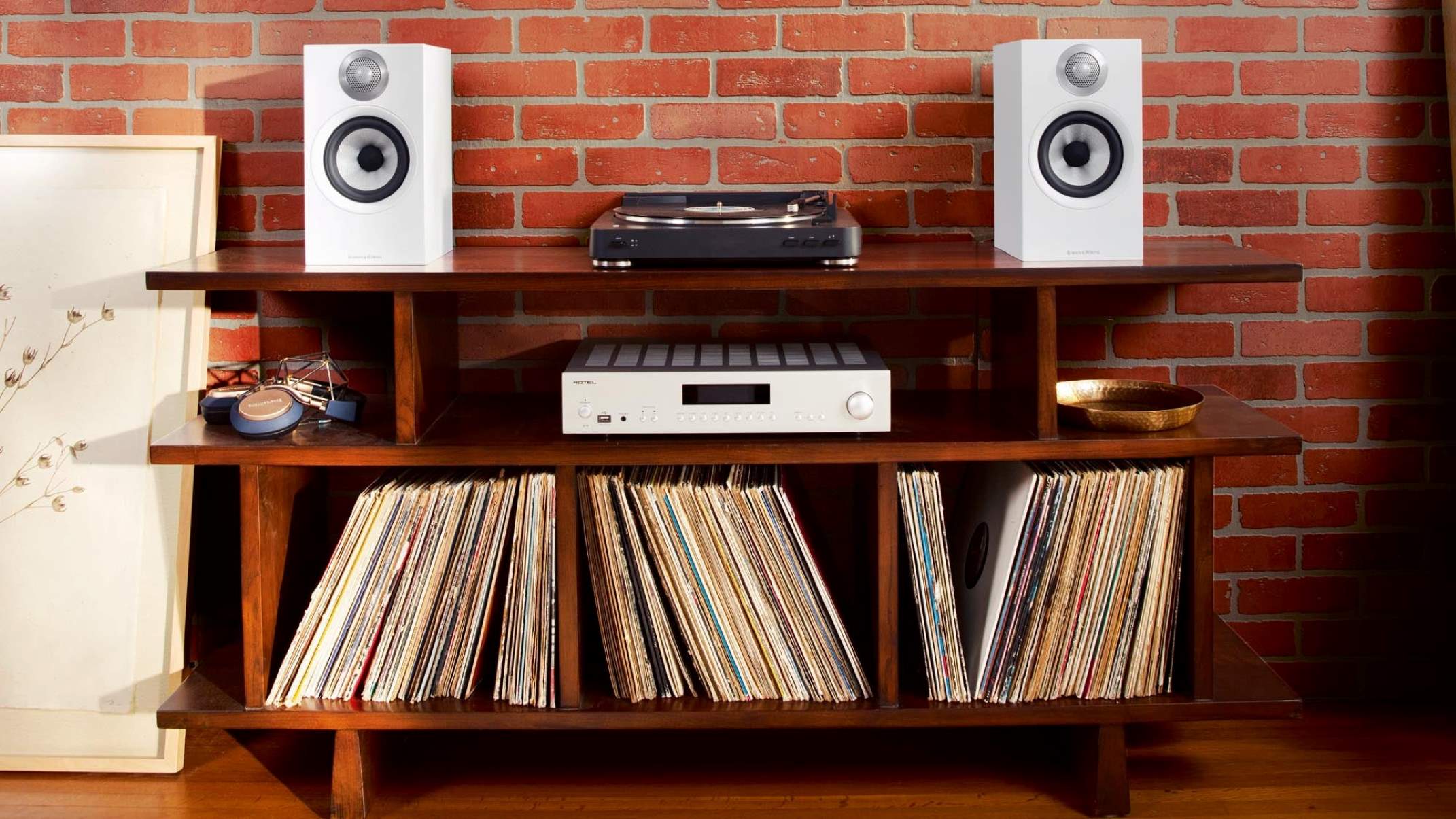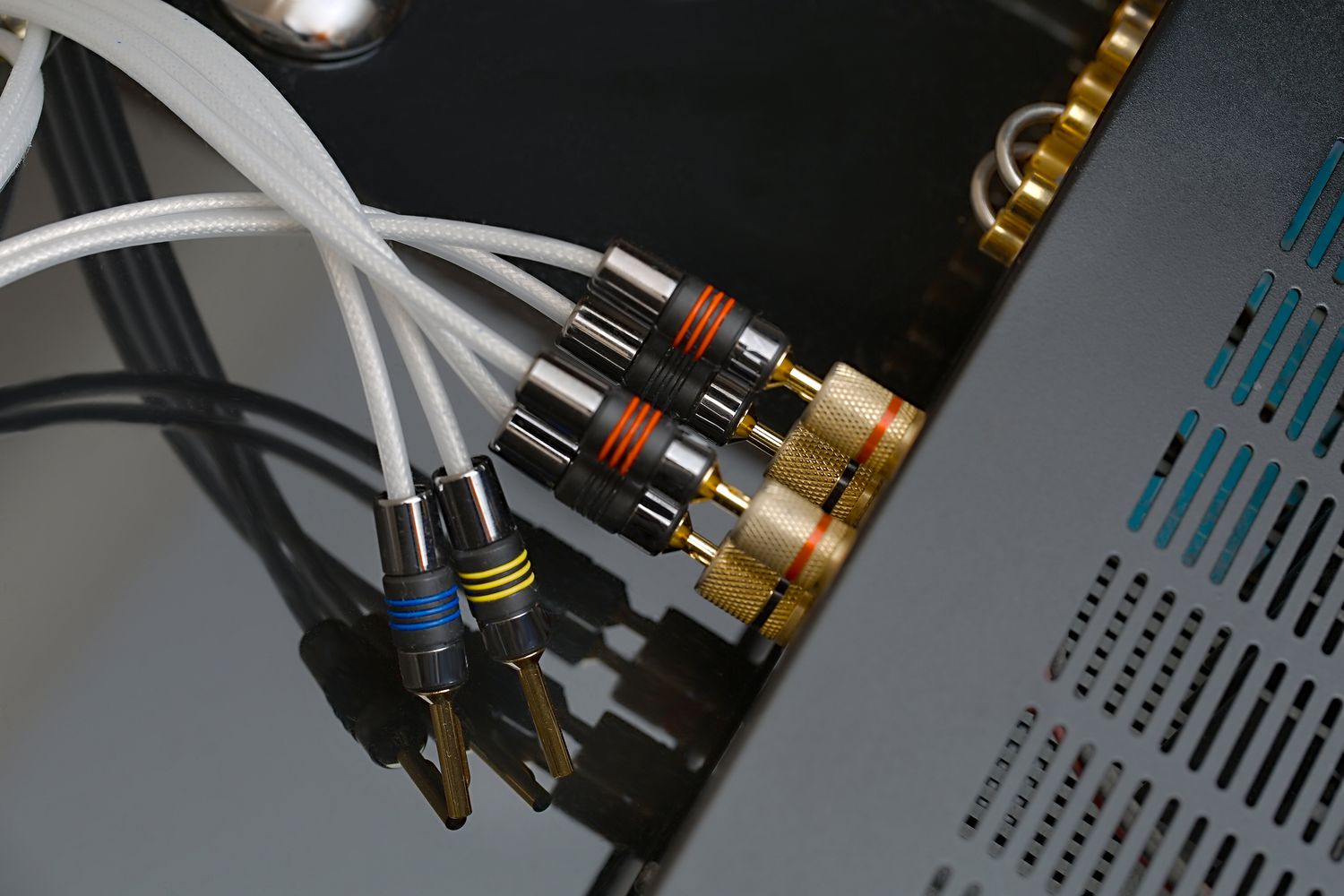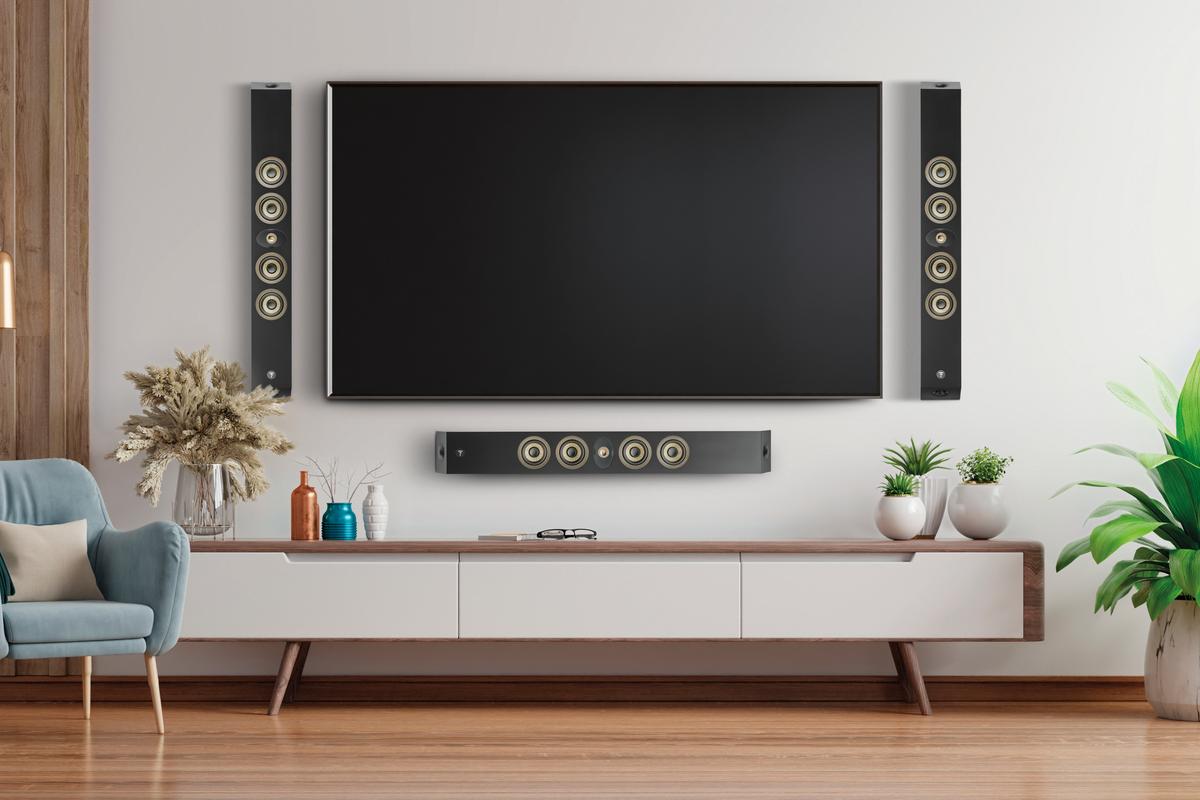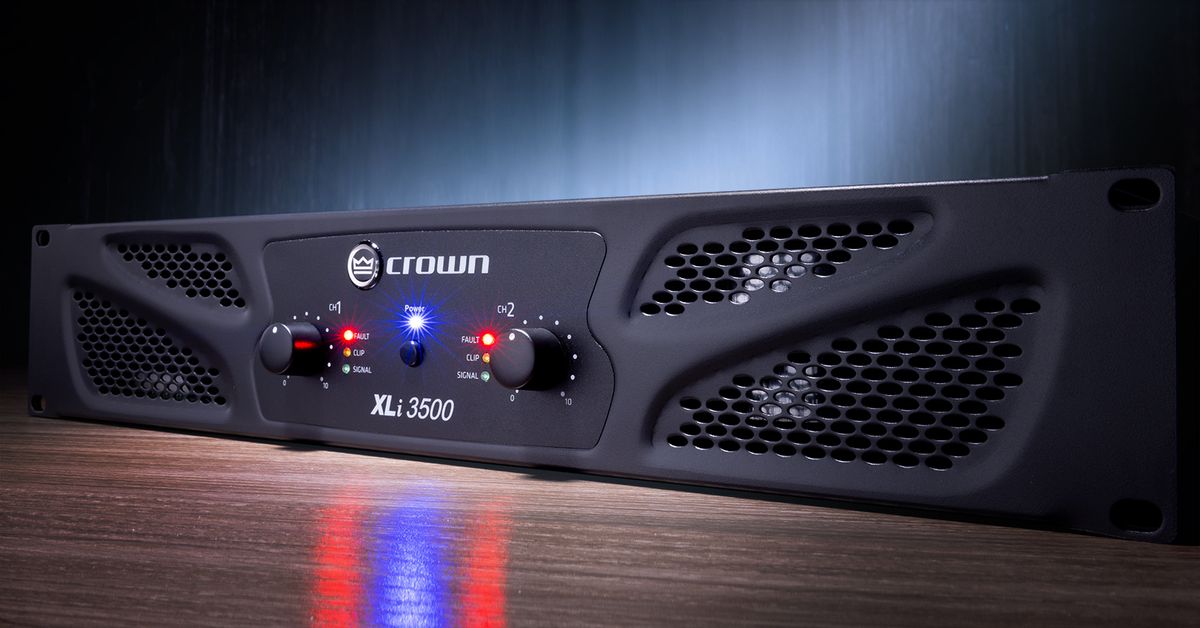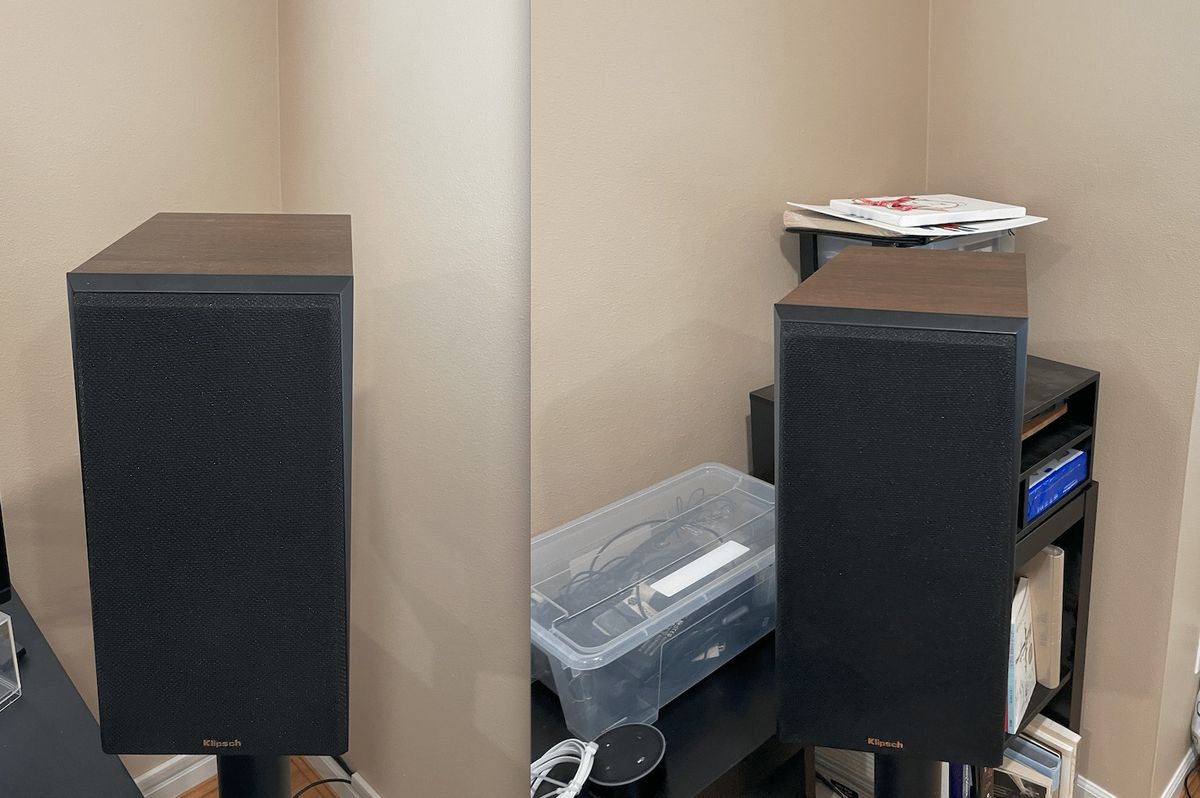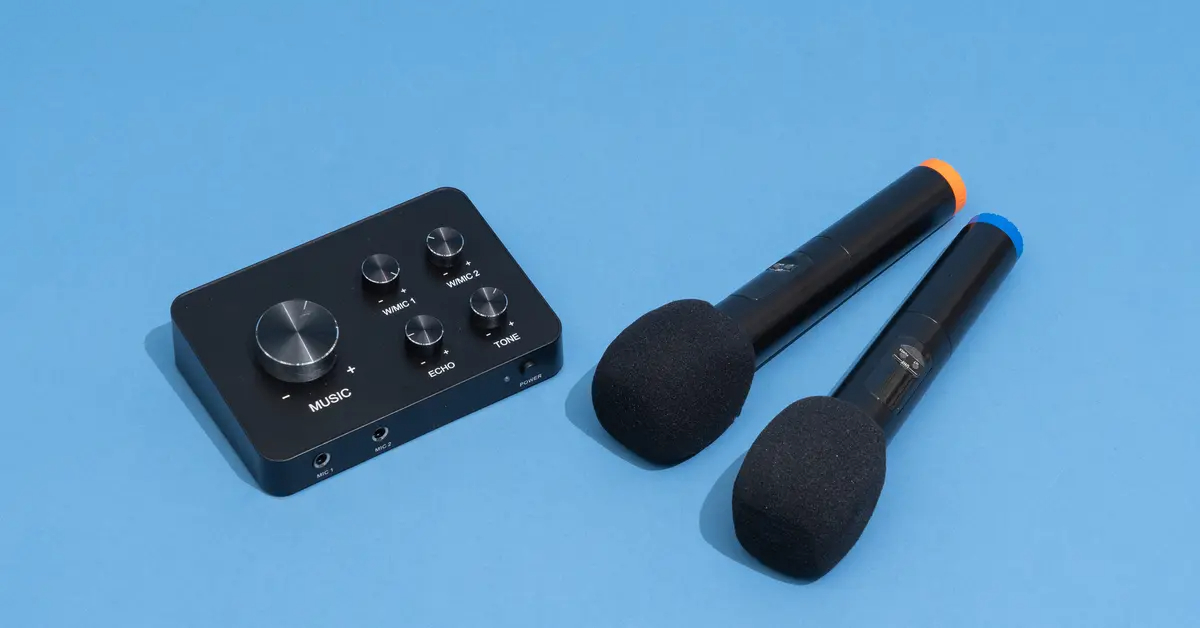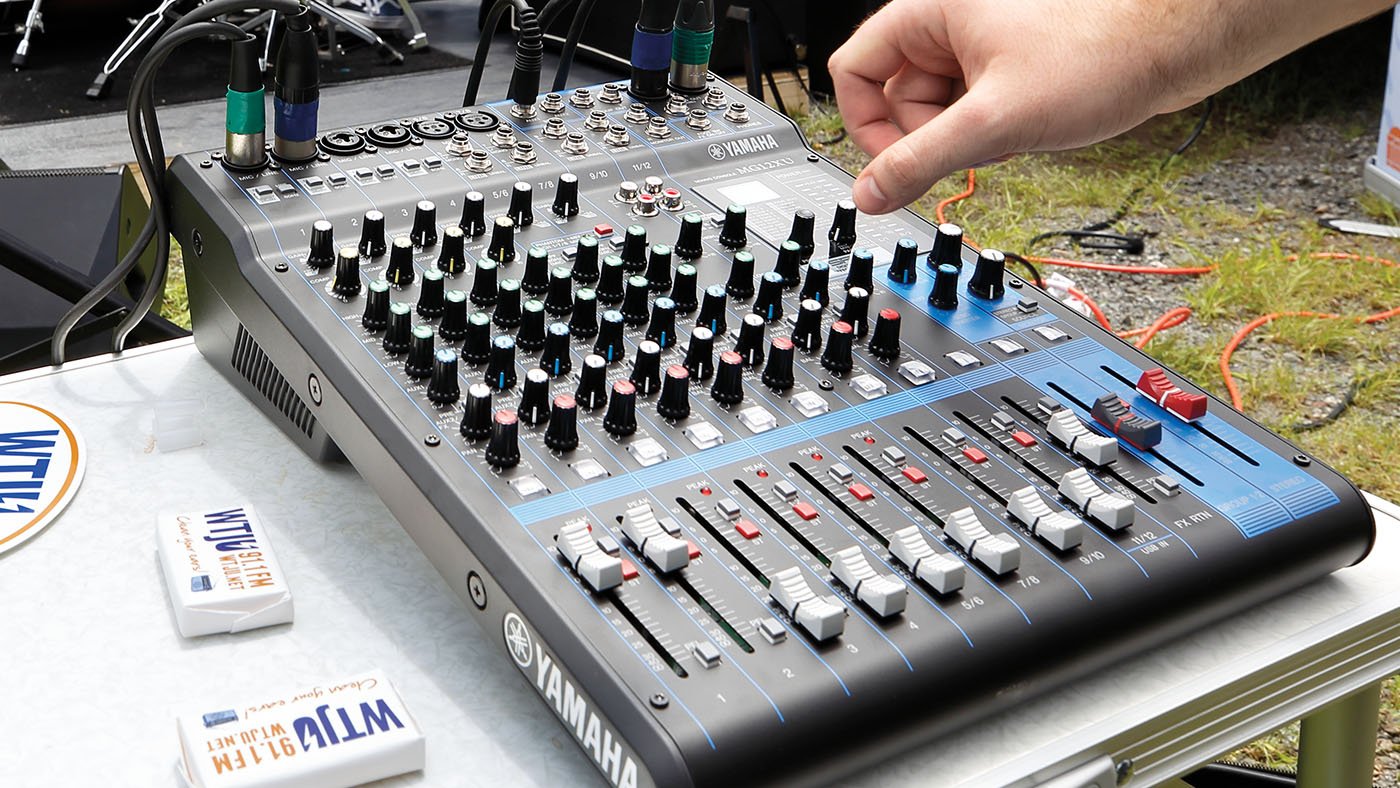Home>Production & Technology>Stereo>How To Connect Center Speaker To Stereo Amplifier
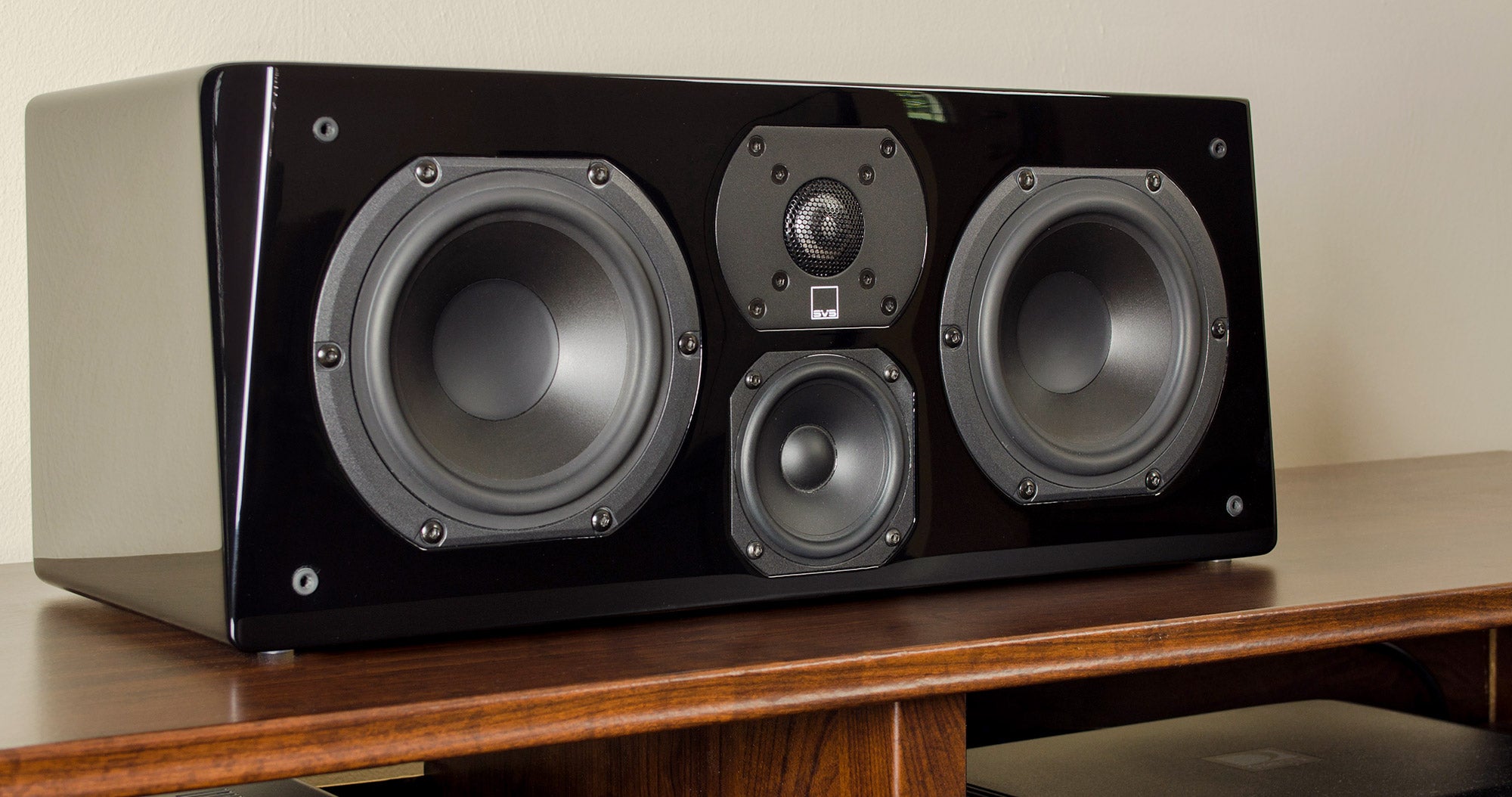

Stereo
How To Connect Center Speaker To Stereo Amplifier
Modified: January 22, 2024
Learn how to connect your center speaker to a stereo amplifier and enhance your stereo sound experience. Follow our step-by-step guide for seamless integration.
(Many of the links in this article redirect to a specific reviewed product. Your purchase of these products through affiliate links helps to generate commission for AudioLover.com, at no extra cost. Learn more)
Table of Contents
Introduction
Welcome to our guide on how to connect a center speaker to a stereo amplifier. If you’re a stereo enthusiast looking to enhance your audio setup with a dedicated center speaker, you’ve come to the right place. The center speaker plays a crucial role in a home theater system, delivering clear and prominent dialogue and vocals. By connecting it to your stereo amplifier, you can achieve a more immersive and balanced sound experience.
Before we dive into the details of the connection process, let’s take a moment to understand the importance of the center speaker. In a stereo setup, the left and right speakers handle the music and surrounding sound effects, while the center speaker specializes in delivering dialogue and vocals, making it vital for movie watching and TV show streaming.
By connecting a center speaker to your stereo amplifier, you can ensure that the dialogue is crystal clear, even when other sounds are playing simultaneously. This center channel setup creates a more realistic and immersive audio experience, allowing you to fully enjoy the intricate details of your favorite movies and shows.
However, connecting a center speaker to a stereo amplifier requires some technical knowledge. It’s crucial to ensure compatibility between your amplifier and the center speaker, as well as understanding the appropriate connection method. With our comprehensive guide, we’ll walk you through each step, helping you connect your center speaker to your stereo amplifier with ease.
Whether you’re a seasoned audiophile or a beginner exploring the world of stereo systems, this guide will provide you with all the information you need. So, let’s get started!
Understanding the Center Speaker
Before we delve into the process of connecting a center speaker to a stereo amplifier, let’s take a closer look at the center speaker itself. The center speaker is a vital component of a home theater system, specifically designed to reproduce dialogue and vocals with clarity and precision.
The center speaker is typically positioned above or below the display screen, such as a TV or a projector. It is responsible for delivering the majority of the dialogue and other center-channel audio, ensuring that it cuts through the mix regardless of the surrounding music and sound effects.
Unlike traditional stereo speakers, which are responsible for creating a wide soundstage, the center speaker’s primary focus is on maintaining a clear and intelligible center image. This enhances the overall audio experience, making it easier to understand dialogue and follow the storyline of movies and TV shows.
Center speakers come in various designs and sizes, ranging from compact bookshelf-style speakers to larger, floor-standing models. They typically feature a dedicated mid-range driver and a tweeter, optimized for reproducing vocal frequencies. Some higher-end center speakers even include additional drivers or built-in subwoofers to provide a more full-bodied sound.
When selecting a center speaker, it’s important to consider its compatibility with your stereo amplifier and existing speakers. Ensuring that they are from the same brand or series can help maintain tonal consistency across your audio setup, resulting in a more coherent and balanced soundstage.
Additionally, pay attention to the power handling capabilities of the center speaker. It should be able to handle the amplifier’s power output without distortion or damage. Ideally, the center speaker should have a power rating that matches or exceeds the amplifier’s power output to ensure optimal performance.
Understanding the role and features of the center speaker is crucial before proceeding with the connection process. Now that we have a clear understanding of the center speaker, let’s move on to checking the compatibility between your center speaker and stereo amplifier.
Compatibility Check
Before connecting your center speaker to your stereo amplifier, it’s important to ensure compatibility between the two. This involves checking the specifications and connections of both the center speaker and the amplifier to ensure they are compatible with each other.
Firstly, check the impedance rating of your center speaker. The impedance is the measure of the speaker’s resistance to the electrical current flowing through it. Most center speakers have an impedance rating of either 4 or 8 ohms. Ensure that the impedance of your center speaker matches or is within the acceptable range specified by your stereo amplifier.
Next, verify the power handling capabilities of the center speaker. The power handling refers to the maximum amount of power that the speaker can handle without distortion or damage. Make sure that the power rating of your center speaker is compatible with the power output of your stereo amplifier. It is generally recommended to have a center speaker with a power rating that matches or exceeds the amplifier’s power output for optimal performance.
Another important consideration is the connection type of both the center speaker and the stereo amplifier. Most center speakers and amplifiers utilize either bare wire connections, binding posts, or speaker connectors. Ensure that the center speaker and amplifier have matching connection types. If not, you may need to use appropriate adapters or cables to establish a proper connection.
Furthermore, if your stereo amplifier supports bi-amping or bi-wiring, make sure that your center speaker is capable of being bi-amped or bi-wired. This configuration allows you to separately connect the amplifier’s power and audio signals to different sections or drivers of the center speaker, resulting in improved performance and clarity.
Lastly, consider the overall sonic characteristics and tonal balance of your center speaker in relation to your existing stereo speakers. While it’s not necessary to have a center speaker from the same brand or series as your other speakers, it can help maintain tonal consistency and create a more cohesive soundstage.
By performing a compatibility check, you can ensure that your center speaker and stereo amplifier are well-matched, maximizing the audio performance of your setup. With the compatibility confirmed, let’s proceed to the next section – connecting the center speaker to the stereo amplifier.
Connecting the Center Speaker to the Stereo Amplifier
Once you have confirmed the compatibility between your center speaker and the stereo amplifier, it’s time to connect them. Follow these step-by-step instructions to ensure a proper and secure connection:
- Locate the center channel output on your stereo amplifier. It is usually labeled as “Center,” “C,” or “C/Sub.”
- Identify the corresponding center speaker input on your center speaker. It is typically labeled as “Center In,” “C,” or “Center Speaker.”
- Using appropriate speaker cables, connect the positive terminal of the center channel output on your stereo amplifier to the positive terminal of the center speaker input. Similarly, connect the negative terminal of the center channel output to the negative terminal of the center speaker input. Ensure a snug and secure connection.
- If your center speaker has bi-amping or bi-wiring capability, and your stereo amplifier supports it, you can make use of separate speaker cables for the high-frequency and low-frequency drivers. Connect the appropriate terminals on the amplifier and the center speaker accordingly.
- Double-check the connections to ensure that they are properly connected and secure.
It’s important to note that some center speakers may have additional connection options, such as binding posts or speaker connectors. In such cases, follow the manufacturer’s instructions to make the appropriate connections.
Once you have successfully connected the center speaker to the stereo amplifier, it’s time to move on to adjusting the sound settings for optimal performance.
Adjusting the Sound Settings
After connecting the center speaker to your stereo amplifier, it’s essential to adjust the sound settings to optimize the performance of your audio setup. Follow these steps to ensure the best possible sound quality:
- Access the audio settings on your stereo amplifier. This can typically be done through the amplifier’s on-screen display menu or dedicated remote control.
- Locate the speaker configuration or setup section in the audio settings.
- Select the appropriate speaker configuration, which should include options for center speaker setup or channel level adjustment. This will vary depending on the brand and model of your stereo amplifier.
- Adjust the channel levels for the center speaker. This allows you to increase or decrease the volume of the center speaker relative to the other speakers in your setup. It’s important to achieve a balanced soundstage where the dialogue is clear and prominent without overpowering the other audio elements.
- Experiment with different settings and listen to various sound sources, such as movies, TV shows, and music, to ensure optimal sound balance and clarity.
Additionally, if your stereo amplifier has advanced sound processing features, such as equalization or room correction, consider utilizing these features to further enhance the sound quality of your center speaker.
While adjusting the sound settings, it’s crucial to use your ears as the ultimate guide. Every room and audio setup is unique, so fine-tuning the settings based on your personal preferences and the acoustic characteristics of your space will help you achieve the best results.
Once you are satisfied with the sound settings, test your audio setup by playing a variety of content and pay attention to the dialogue clarity, vocal reproduction, and overall sound balance. Don’t hesitate to make further adjustments if necessary.
With the sound settings properly adjusted, you’re now ready to enjoy the immersive audio experience the center speaker brings to your stereo amplifier setup.
Troubleshooting Common Issues
While connecting a center speaker to a stereo amplifier is a relatively straightforward process, you may encounter some common issues along the way. Here are a few troubleshooting tips to help you resolve potential problems:
- No sound from the center speaker: First, ensure that the center speaker is properly connected to the stereo amplifier. Double-check the speaker cable connections at both ends. Also, verify that the center speaker is powered on and that the amplifier’s settings are configured correctly to enable the center channel output.
- Imbalanced sound: If you’re experiencing imbalanced sound, where the center speaker seems too loud or too soft compared to the other speakers, adjust the channel levels in the amplifier’s settings. Increase or decrease the volume of the center speaker until a balanced soundstage is achieved.
- Distorted sound: If you hear distortion or clipping coming from the center speaker, make sure that the speaker is not being overdriven by an amplifier with excessive power output. Check the power rating of the center speaker and ensure it can handle the power output of your amplifier. Additionally, ensure that the amplifier’s volume levels are not set too high, causing distortion.
- Inconsistent dialogue: If the dialogue from the center speaker sounds inconsistent, ensure that the source audio you’re listening to is well-balanced and properly mixed. Some movies or TV shows may have varying audio levels or production issues that can affect dialogue clarity. If the issue persists across multiple sources, consider adjusting the center speaker’s position or making additional sound adjustments in your room.
- Compatibility issues: In some cases, compatibility issues may arise if the center speaker and stereo amplifier are not well-matched. Ensure that the impedance of the center speaker matches or is within the acceptable range specified by the amplifier. Also, check for any compatibility requirements or recommendations from the manufacturers.
If you continue to experience issues, consulting the user manuals for both your center speaker and stereo amplifier can provide valuable troubleshooting information. Additionally, reaching out to the manufacturers’ customer support can help you address any specific concerns or problems you may encounter.
By troubleshooting common issues and taking the necessary steps to resolve them, you can ensure a seamless and optimal connection between your center speaker and stereo amplifier.
Conclusion
Congratulations! You have successfully learned how to connect a center speaker to a stereo amplifier. By following the steps outlined in this guide, you can now enjoy a more immersive audio experience, with clear dialogue and vocals enhancing your home theater setup.
Understanding the importance of the center speaker, ensuring compatibility between the center speaker and stereo amplifier, and properly connecting and adjusting the sound settings are all essential factors in achieving optimal audio performance. Taking the time to troubleshoot any issues that may arise will also help you overcome any challenges you might encounter along the way.
Remember, your ears are the best judge when it comes to achieving the ideal sound balance. Don’t be afraid to experiment with different settings and make adjustments according to your personal preferences and the acoustic characteristics of your space.
With the center speaker connected to your stereo amplifier, you can now immerse yourself in the world of movies, TV shows, and music, experiencing sound in a whole new way. enjoy the crisp dialogue, powerful vocals, and a well-balanced soundstage. So sit back, relax, and enjoy the captivating audio experience that your center speaker and stereo amplifier setup can provide.
We hope this guide has been helpful and that you’re now ready to take your stereo system to the next level. Happy listening!

